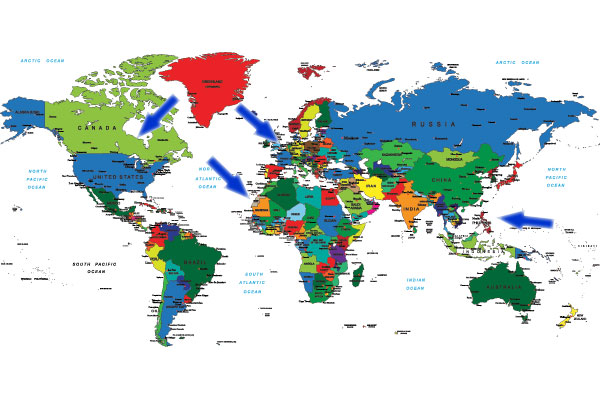We often refer to French as a “Romance” language, but this has less to do with any associations that might be conjured up by the prospect of an evening with a delightful partner on the banks of the river Seine than it does with the fact that French is one of the many languages that outlived the Roman Empire!
In its origins, French was a dialect of Latin, which arrived in the area with Julius Caesar and his troops in the first century B.C. Gaul, as the country was then called, became one of the richest parts of the empire and soon Latin outstripped the various native Celtic tongues and became the main language of communication.
It took many centuries for the nation of France to form, centuries, too, for the language to evolve into the form that we recognize today as French. But the success of French as an international language of diplomacy and business is undeniable. It was one of the two official languages of the League of Nations and is now one of the six official languages of the United Nations.
French today is spoken as either a first or second language by over 120 million people in Belgium, Luxembourg, Monaco, Andorra, Canada, and twenty former French and Belgian colonies in Africa and Asia.
French has left an indelible imprint on the English language as a result of the Norman invasion of 1066, which greatly enriched the English vocabulary and makes learning the language somewhat easier for speakers of English. English and French have been borrowing each other’s vocabulary for ten centuries or more.
Many French terms have settled happily into the English language, from old words like pork and beef (from porc and bœuf ) to newer arrivals such as coup d’état and sauce hollandaise. English words borrowed into French have met with a more mixed reception. Although most speakers welcome the arrival of new terms into the spoken language, the French government has been making concerted efforts to limit the use of loanwords, particularly those from English. Nevertheless, you will hear many “franglais” terms in France, such as: le weekend, le hamburger, le tee-shirt, and le snack-bar.
Some general notes on the French language:
French uses the Latin alphabet with no additional letters, but with a set of accent marks. Four accents are used to modify pronunciation:
| Grave | père (“father”) | The grave accent gives the vowel a longer sound. |
| Acute | été (“summer”) | The acute accent sharpens the sound of e (pronunciation /aytay/) |
| Circumflex | âme (“soul”) | Like the grave accent, the circumflex gives the vowel a slightly longer sound |
| Cedilla | français (“French”) | The cedilla softens c before a, o and u. |
Written French is not a very good guide to how the language is pronounced, as spelling changes have not kept up with changes in pronunciation over the centuries. One of the most confusing pronunciation issues for the learner is the number of silent consonants, especially at the end of words.
Nouns in French have either a feminine or a masculine grammatical gender. These need to be learned as there is no apparent rhyme or reason for when to use which.
French conjugates its verbs according to subject (I, you, he, she, we, you all, they), the tense (present, future, past) and the mode (conditional, subjunctive). For example:
| nous parlons | we are speaking |
| nous parlions | we were speaking |
| nous parlerons | we will speak |
| nous parlerions | we would speak |
And finally, word order in French is Subject-Verb-Object, as in English.












